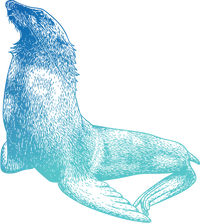Beyond the bin: What happens to our compost?
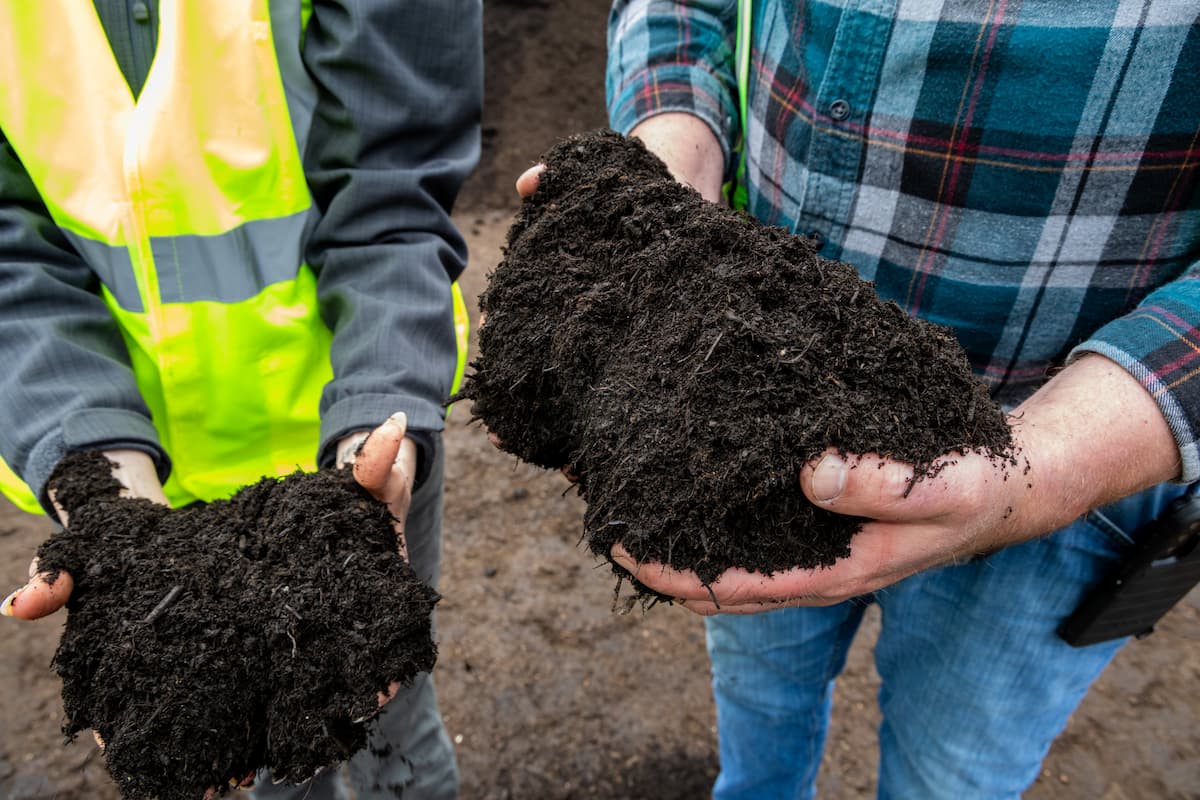
The next time you dine at the Seattle Aquarium Café, you’ll be asked to put food waste and compostable packaging into one of our green compost bins.
What happens to the contents of that bin after you leave the Aquarium? To find out, we visited a local facility operated by Cedar Grove, which provides the compostable packaging used in our café and processes our food waste.
Air, water, wood and microbes form a composting dream team. Together, they undergo a process of around 49 days that produces compost. Cedar Grove then further ages that compost for 12 to 18 months to allow it to mature into a high-quality product that’s ready to be sold!
Follow along to see how your waste is transformed into nutrient-rich compost that helps plants grow and even filters harmful chemicals from run-off along highways! (Hungry for more? Dive into how your compost also powers your next lunch at our café!)
Journey beyond the bin
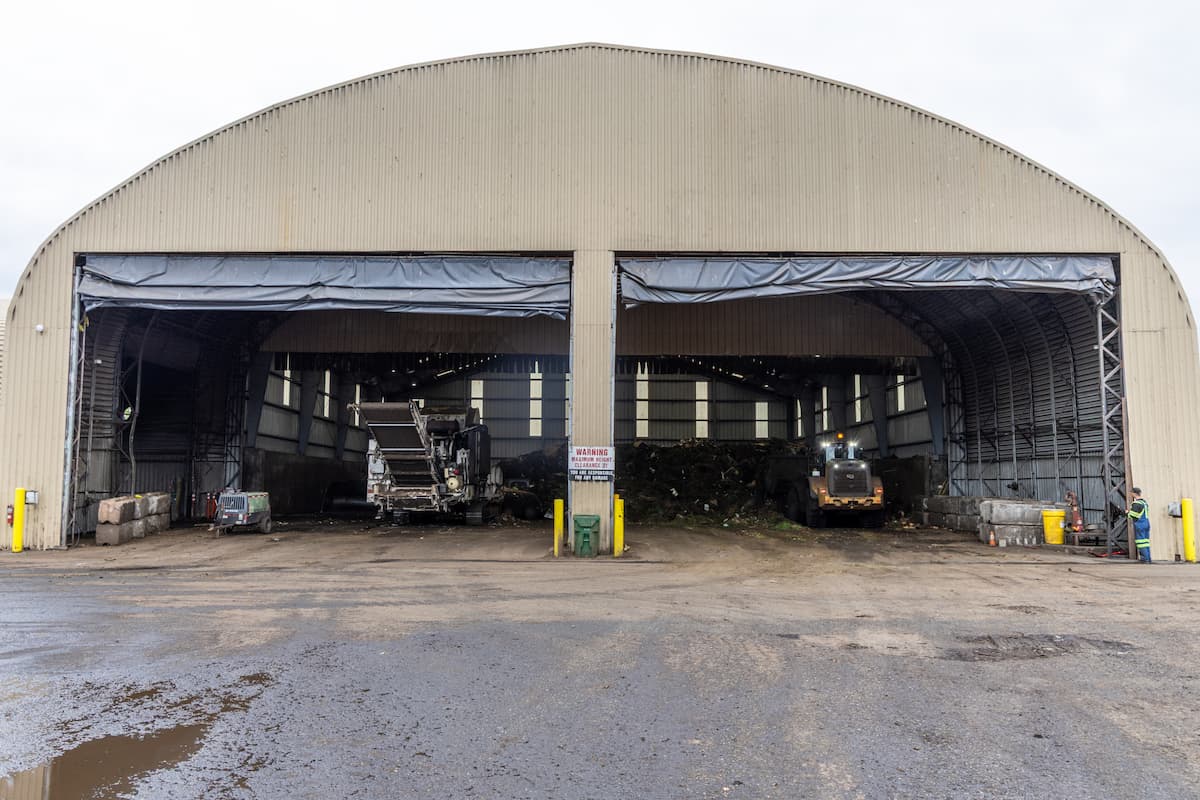
The Everett facility we visited processes between 700 and 900 tons of compost each day. The high volume means that trucks visit this “tipping building” day and night to drop off new yard and food scraps from homes and businesses. A special biofilter in the back naturally filters the odors associated with unloading the material.
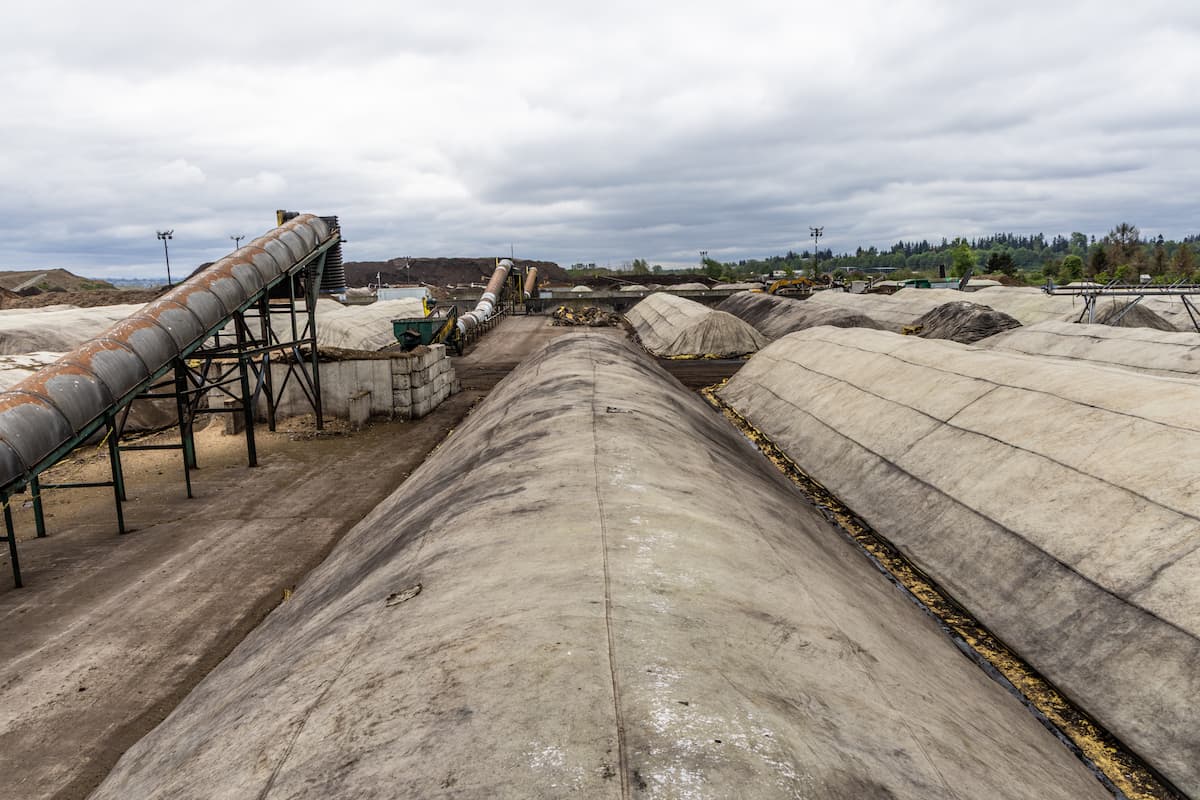
From the tipping building, the fresh material is ground and placed onto an electronic conveyer belt. The material passes under a powerful magnet that removes metal contaminants like nails. Then Cedar Grove shapes it into long rows that are about 10 feet tall and pulls a breathable fabric cover over each row. The cover creates a biosphere where microbes can begin to break down the material. Air and water—microbes’ essential collaborators in this process—are added to the rows.
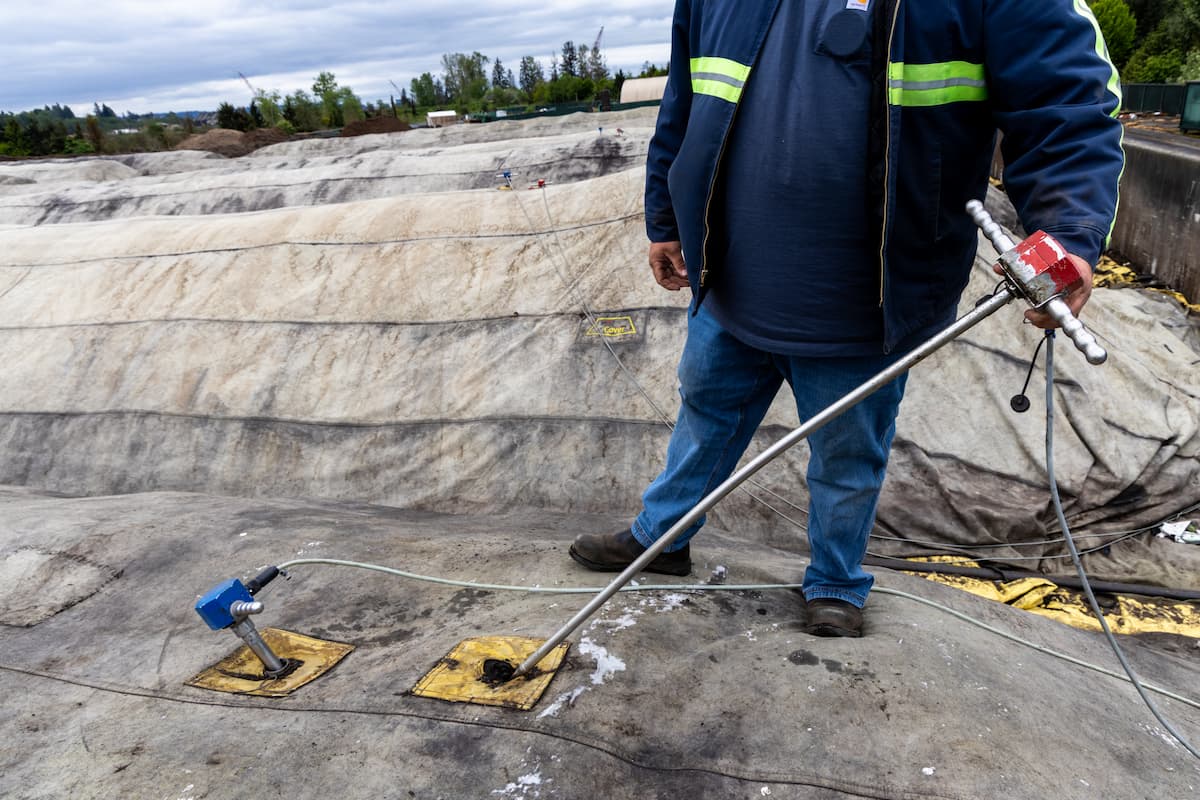
As microbes work with air and water to break down the waste, temperatures within each row naturally rise to 160 to 180 degrees Fahrenheit. Cedar Grove’s team carefully monitors oxygen levels and temperature using a probe.
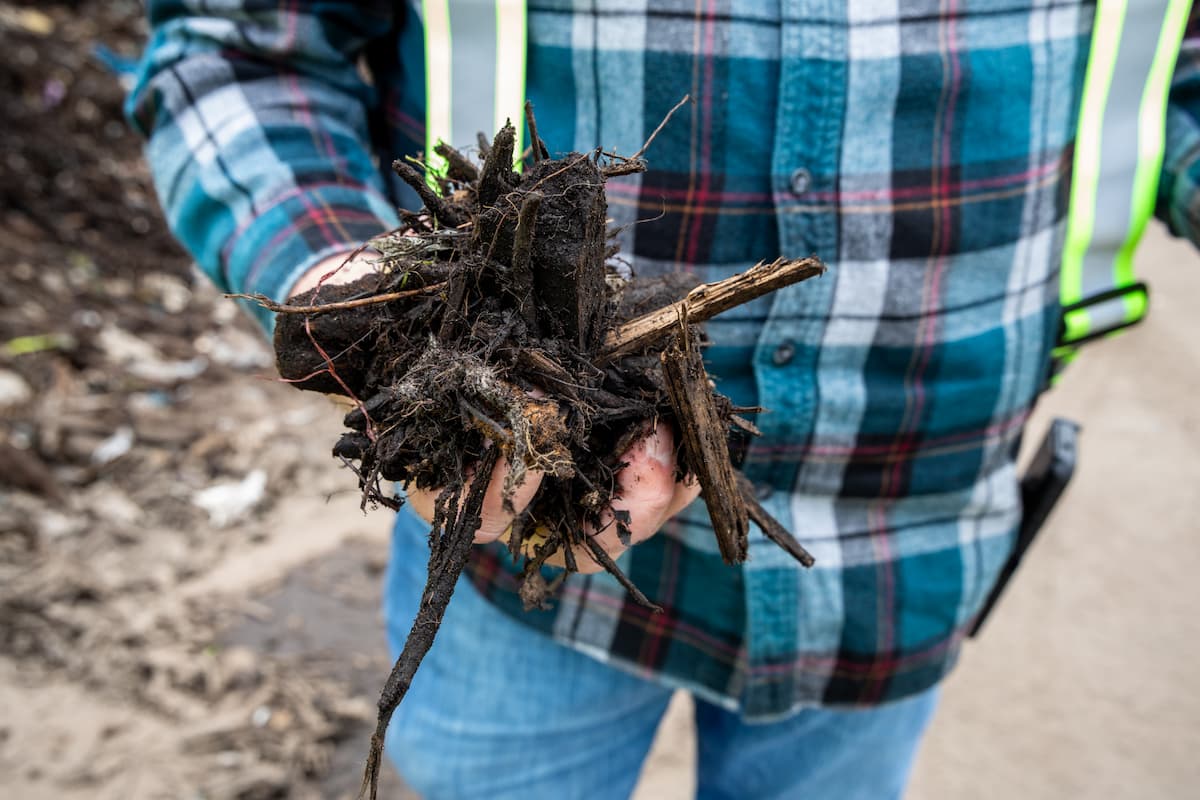
Toward the end of the 49-day process, the covering is removed from each near-final compost row. It’s starting to smell less like food waste and more like a forest floor!
Once the process is complete, the compost is screened for contaminants like plastic. Sometimes it needs one more pass through the system. Here, a Cedar Grove team member holds material that is not ready to use yet even though it has broken down substantially—and will go through these steps again.

Once the final product has been screened and approved by Cedar Grove’s team, it’s ready to sell. Compost that’s ready to sell looks like dark soil, feels velvety and smells woodsy. Cedar Grove turns our compost waste into a variety of soil products that help grow new life, prevent erosion and even line the sides of local highways—where they filter contaminants from runoff including 6PPD, a chemical that’s toxic to coho salmon.
Participating in the life cycle of composting is one of the ways the Aquarium lives its commitment to sustainability. Thank you for doing your part to keep our compost bins free of contaminants and to breathe new life into what would otherwise be waste!
